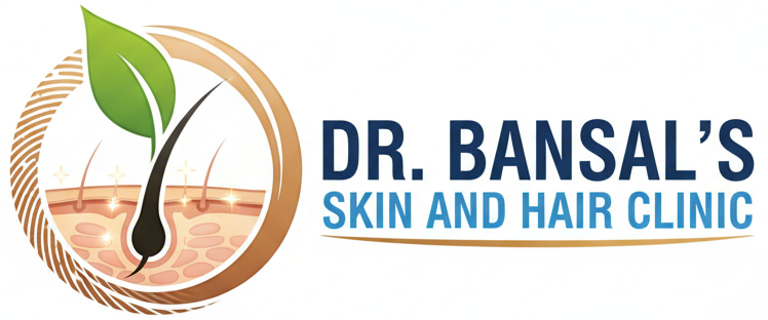Vitiligo Treatment In Indore
Dr. Bansal's Skin Clinic, Indore
Vitiligo is a chronic skin condition that leads to the loss of skin color in patches.
It is a condition that occurs when melanocytes, cells responsible for melanin production, the pigment that gives color to skin, hair, and eyes-are destroyed or no longer function.
The condition is not contagious and usually affects a person's appearance and self-confidence.
It may affect any part of the body: face, hands, arms, legs, lips, and genitals, but sometimes it can involve even the hair and the inside of the mouth.
Description / Symptoms
White or light-colored patches on the skin
Patches on both sides of the body are distributed symmetrically.
Premature whitening or graying of scalp hair, eyebrows, eyelashes, or beard
Loss of color within the mouth or nose
Commonly appears first on areas exposed to the sun: face, neck, hands, and feet.
Vitiligo spreads slowly or rapidly, and the exact cause remains unknown, but it's usually associated with autoimmune factors, genetic predisposition, or skin trauma.
Treatment of Vitiligo
There is no permanent cure, but several treatments can help restore skin color or reduce the contrast between affected and normal skin.
1. Topical Medications
Used for mild or limited vitiligo:
Corticosteroid creams - help return color (repigmentation) in early stages.
Calcineurin inhibitors: useful in facial and neck areas, especially for sensitive skin. Examples are Tacrolimus and Pimecrolimus.
Vitamin D analogues are used on occasion to promote pigment return.
2. Phototherapy (Light Treatment)
Narrowband UVB is a form of therapy in which skin is exposed to specific wavelengths of light that stimulate melanocytes.
PUVA therapy: this uses UVA light associated with medication called psoralen to restore color.
Usually requires several sessions over weeks or months under medical supervision.
3. Oral Medications
Short courses of corticosteroid tablets may be used to stop rapid spreading.
Immunomodulators to suppress autoimmune activity, causing loss of pigment
4. Surgical Treatments
Used when vitiligo is stable, not spreading, for at least 6-12 months:
Skin grafting involves the transfer of small patches of healthy pigmented skin onto affected areas.
Melanocyte transplantation-the transfer of pigment-producing cells from normal skin to the white patches.
Micropigmentation (tattooing) – This is particularly useful for lips and small patches.
5. Cosmetic and Supportive Treatments
Make-up or self-tanning creams: these may help cover white patches for cosmetic purposes.
Depigmentation therapy - Monobenzone cream for those with extensive vitiligo who want to even out their skin tone.
Psychological support or counseling helps in coping with emotional effects and self-esteem issues.
Prevention and Self-Care
While complete prevention of vitiligo is not possible, some steps can help minimize worsening and protect the skin:
Protect skin from the sun with broad-spectrum sunscreen (SPF 30 or higher).
Avoid skin injuries (cuts, burns, or friction) — these may provoke new patches of psoriasis, a feature known as the Koebner phenomenon.
Avoid chemicals or cosmetic products that irritate your skin.
Eat a balanced diet high in antioxidants such as fruits, vegetables, and vitamins B12, C, folic acid, and zinc.
Manage your stress, as it can exacerbate autoimmune activity.
Follow up with a dermatologist on a regular basis regarding the progress of treatment.
⚠️ Important Notes: Vitiligo is neither infectious nor dangerous, but it can have psychological and social impacts. Early treatment usually produces better results. People with vitiligo have a greater chance of sunburn, so sun protection is very crucial.
Care
Expert solutions for hair and skin health.
Health Hairs AT
Beauty
+91 9926120111
© 2025. All rights reserved.
